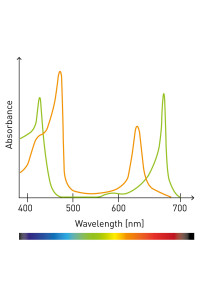UV-VIS Anti-Hyaluronidase Assay
- Product Code: 31936
UV-VIS Anti-Hyaluronidase Assay
- -
- -
- -
- -
- -
- -
- -
- -
- -
- -
- -
- -
- -
- -
- -
- -
- -
UV-VIS Anti-Hyaluronidase Assay
Materials and Reagents:
Hyaluronidase enzyme
Hyaluronic acid substrate (sodium hyaluronate)
Inhibitor (substance being tested)
Appropriate buffer solution (e.g., phosphate buffer, pH 5-6)
Deionized water
Procedure:
Prepare a Blank Solution:
Use a UV-grade quartz cuvette and fill it with the buffer solution. This will serve as your blank reference for baseline correction.
Calibrate the Spectrophotometer:
Turn on the UV-Vis spectrophotometer and allow it to warm up.
Set the wavelength to the appropriate value for monitoring the reaction. The wavelength may vary depending on the specific assay, but it's commonly around 400 nm.
Adjust the spectrophotometer's baseline using the blank solution, so that it reads zero absorbance at the chosen wavelength.
Prepare the Reaction Mixture:
In a microcentrifuge tube, mix a known volume of hyaluronidase enzyme solution with a known volume of the hyaluronic acid substrate solution. The enzyme concentration and substrate concentration should be consistent between experiments.
If you are testing the inhibitory effect of a substance, add the inhibitor to this reaction mixture at an appropriate concentration. Ensure that you have a control reaction mixture without the inhibitor for comparison.
Incubate the Reaction Mixture:
Incubate the reaction mixture at an appropriate temperature (typically around 37°C) for a specific amount of time. The incubation time may vary depending on the enzyme kinetics and the specific assay conditions.
Measure the Absorbance:
After the incubation period, take a small volume (usually 1 mL) of the reaction mixture and place it in a quartz cuvette.
Wipe the cuvette with a lint-free tissue to remove any fingerprints or smudges.
Place the cuvette in the spectrophotometer and record the absorbance at the chosen wavelength.
Calculate the Inhibition Percentage:
Compare the absorbance of the sample with the inhibitor to the control sample without the inhibitor.
Be the first to review this product :-)
Recommend Lab-Service
| Lab Service | ราคา |
|---|
UV-VIS Anti-Hyaluronidase Assay
UV-VIS Anti-Hyaluronidase Assay
Materials and Reagents:
Hyaluronidase enzyme
Hyaluronic acid substrate (sodium hyaluronate)
Inhibitor (substance being tested)
Appropriate buffer solution (e.g., phosphate buffer, pH 5-6)
Deionized water
Procedure:
Prepare a Blank Solution:
Use a UV-grade quartz cuvette and fill it with the buffer solution. This will serve as your blank reference for baseline correction.
Calibrate the Spectrophotometer:
Turn on the UV-Vis spectrophotometer and allow it to warm up.
Set the wavelength to the appropriate value for monitoring the reaction. The wavelength may vary depending on the specific assay, but it's commonly around 400 nm.
Adjust the spectrophotometer's baseline using the blank solution, so that it reads zero absorbance at the chosen wavelength.
Prepare the Reaction Mixture:
In a microcentrifuge tube, mix a known volume of hyaluronidase enzyme solution with a known volume of the hyaluronic acid substrate solution. The enzyme concentration and substrate concentration should be consistent between experiments.
If you are testing the inhibitory effect of a substance, add the inhibitor to this reaction mixture at an appropriate concentration. Ensure that you have a control reaction mixture without the inhibitor for comparison.
Incubate the Reaction Mixture:
Incubate the reaction mixture at an appropriate temperature (typically around 37°C) for a specific amount of time. The incubation time may vary depending on the enzyme kinetics and the specific assay conditions.
Measure the Absorbance:
After the incubation period, take a small volume (usually 1 mL) of the reaction mixture and place it in a quartz cuvette.
Wipe the cuvette with a lint-free tissue to remove any fingerprints or smudges.
Place the cuvette in the spectrophotometer and record the absorbance at the chosen wavelength.
Calculate the Inhibition Percentage:
Compare the absorbance of the sample with the inhibitor to the control sample without the inhibitor.
| Mechanism | - |
| Appearance | - |
| Longevity | - |
| Strength | - |
| Storage | - |
| Shelf Life | - |
| Allergen(s) | - |
| Dosage (Range) | - |
| Recommended Dosage | - |
| Dosage (Per Day) | - |
| Recommended Dosage (Per Day) | - |
| Mix Method | - |
| Heat Resistance | - |
| Stable in pH range | - |
| Solubility | - |
| Product Types | - |
| INCI | - |
ตะกร้า
ไม่มีสินค้า



